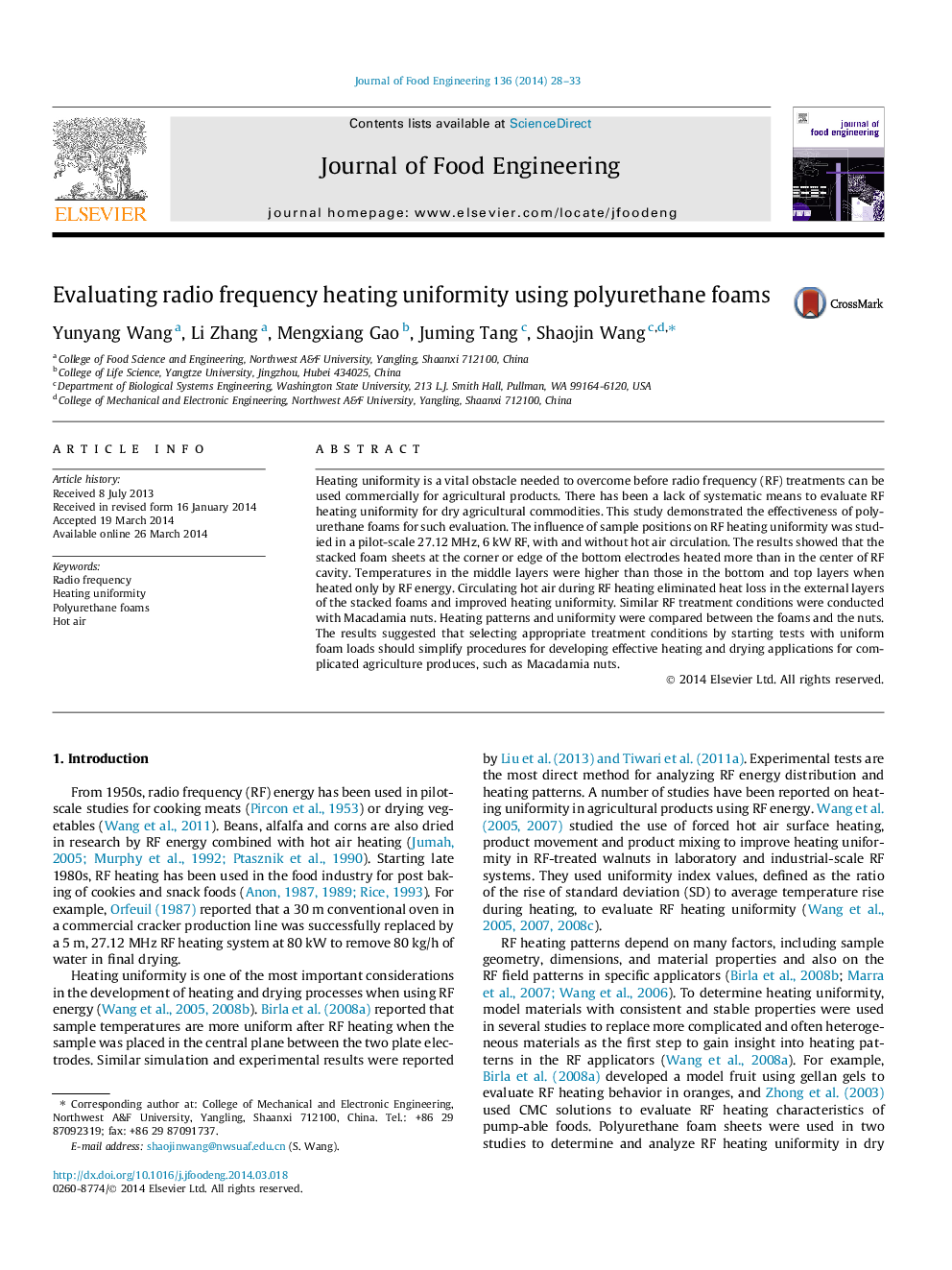| Article ID | Journal | Published Year | Pages | File Type |
|---|---|---|---|---|
| 223133 | Journal of Food Engineering | 2014 | 6 Pages |
•Final foam temperatures were different at various locations on electrodes.•Central part of foams was heated more using RF treatment alone.•Circulated hot air greatly improved RF heating uniformity.•Foam was appropriately used to evaluate RF heating uniformity in nuts.
Heating uniformity is a vital obstacle needed to overcome before radio frequency (RF) treatments can be used commercially for agricultural products. There has been a lack of systematic means to evaluate RF heating uniformity for dry agricultural commodities. This study demonstrated the effectiveness of polyurethane foams for such evaluation. The influence of sample positions on RF heating uniformity was studied in a pilot-scale 27.12 MHz, 6 kW RF, with and without hot air circulation. The results showed that the stacked foam sheets at the corner or edge of the bottom electrodes heated more than in the center of RF cavity. Temperatures in the middle layers were higher than those in the bottom and top layers when heated only by RF energy. Circulating hot air during RF heating eliminated heat loss in the external layers of the stacked foams and improved heating uniformity. Similar RF treatment conditions were conducted with Macadamia nuts. Heating patterns and uniformity were compared between the foams and the nuts. The results suggested that selecting appropriate treatment conditions by starting tests with uniform foam loads should simplify procedures for developing effective heating and drying applications for complicated agriculture produces, such as Macadamia nuts.
